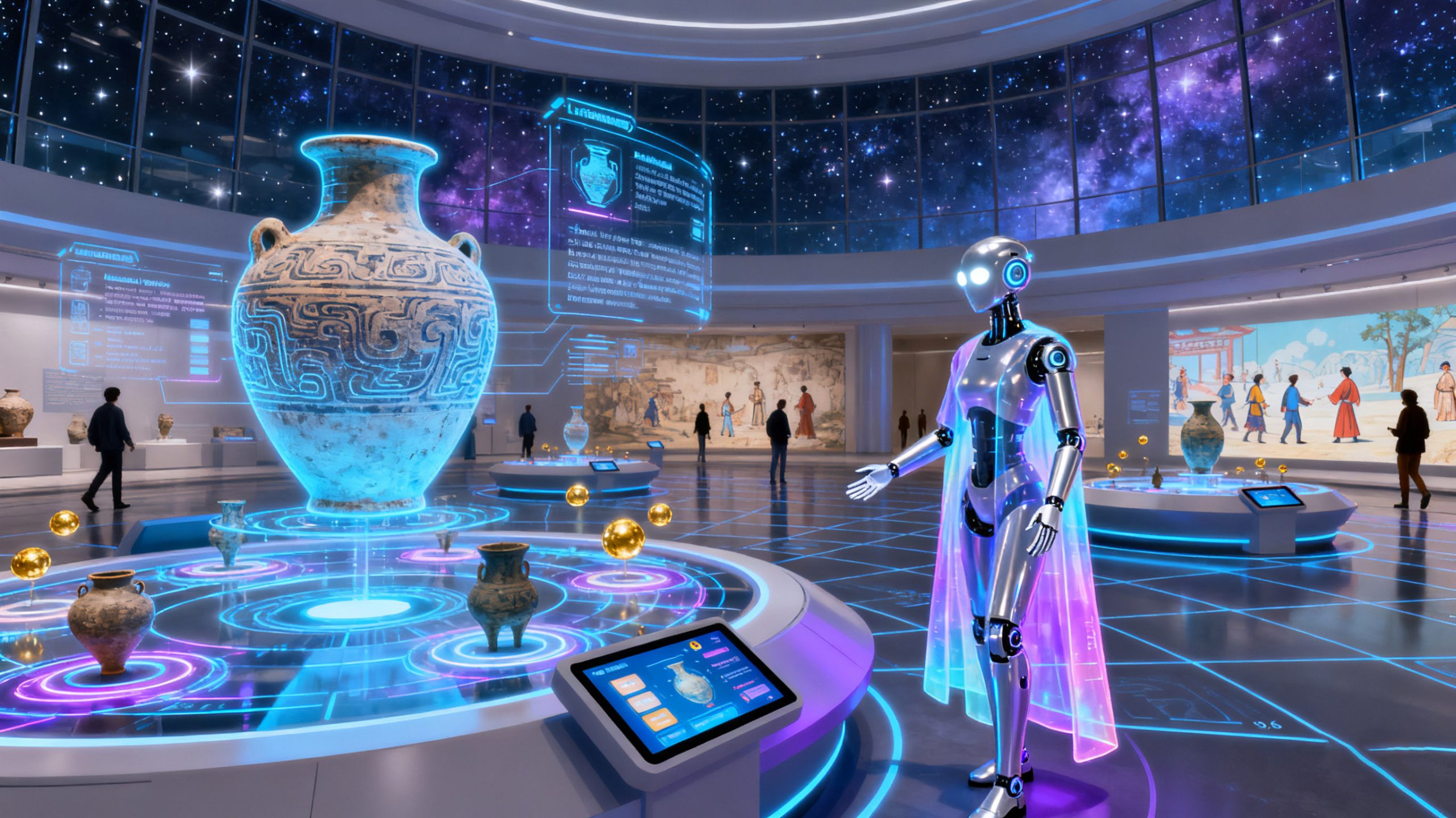Imagine standing before a rare porcelain vase, not behind velvet ropes, but in the very workshop where it was created centuries ago. Picture yourself not just reading a plaque about a historical artifact, but asking its creator about their inspiration. This isn’t science fiction; it’s the profound new reality that metaverse technology offers to cultural heritage, revolutionizing how we connect with art and history.
Our vision is to empower enterprises and individuals to thrive in the metaverse, and we see the cultural sector as a frontier on the brink of an extraordinary transformation.
The Museum’s New Mission: From Guardian to Global Ambassador
For centuries, museums have served as the steadfast guardians of physical artifacts. In today’s hyper-connected world, however, their mission is evolving. They are becoming global ambassadors of our shared civilization, tasked with making their collections accessible and compelling to an audience that may never set foot inside their physical walls.
This presents a critical challenge: How can the soul-stirring experience of art and history be translated into the digital realm? The answer lies in moving beyond static online galleries and embracing truly immersive, interactive virtual worlds. This is where our Enterprise Digital Exhibition Hall solution becomes a strategic partner, enabling this bold new mission.
Digital Twinning: Preserving Your Legacy for Eternity
Time is the greatest vulnerability for any collection. Our solution leverages state-of-the-art 3D modeling and AI to create perfect digital twins of your priceless artifacts. This is the ultimate archival strategy—a fragile manuscript or an ancient sculpture preserved in its pristine state forever, available for deep study and admiration without the risk of physical degradation.
Our VR SaaS platform, DBiM.com, provides the essential tools for this task. Using our Realcapture modeling tool, institutions can transform simple images and videos into detailed 3D models of any object. This isn’t just about preservation; it’s about unlocking new layers of academic research and public engagement previously unimaginable.
A Curatorial Revolution: Making History Irresistible
A digital exhibition should be more than a catalog of objects; it must be a compelling story. Our platform empowers curators to become metaverse storytellers with a suite of innovative tools:
- Immersive Scene-Roaming: With our 720 Panorama EditorSaaS, panoramic images are transformed into seamless, walkable environments. Allow visitors to stroll through historical sites or enter an artist’s studio as if they were actually there.
- Interactive 3D Displays: Free visitors from the constraints of a display case. Let them manipulate 3D models of artifacts, zooming in on a painter’s brushstroke or examining a sculptor’s chisel marks from every conceivable angle.
- AI-Powered Virtual Docents: Deploy customized AI Agents as multilingual virtual guides. Imagine an AI modeled after Leonardo da Vinci explaining the secrets of his inventions, offering personalized tours, and answering questions 24/7.
- Gamified Learning: Boost engagement by integrating interactive games, rewards, and Web3 tokens. A scavenger hunt through ancient Rome or a quest to reassemble a shattered artifact can turn passive viewing into active, memorable participation.
- Living Narratives: Recreate pivotal historical events within a virtual space. Let visitors witness the signing of a historic treaty or stand in a bustling marketplace from centuries past, providing context that a wall plaque never could.
Beyond the Visit: Forging New Revenue Streams
The metaverse unlocks powerful new economic models for cultural institutions. By linking digital twins to NFTs (Non-Fungible Tokens), museums can offer verifiable, limited-edition digital collectibles of their most iconic pieces. This creates a sustainable revenue stream to fund conservation, research, and future digital initiatives, all while cultivating a global community of digital patrons invested in the museum’s success. As a leader in virtual goods services, we provide the expertise in secure digital transactions needed to make this a seamless and profitable venture.
The Future is Here: Where AI Curators Meet Metaverse Museums
The true paradigm shift will arrive when our AI Agents, powered by the DBiM Metaverse AI OS, begin to function as collaborative curators. An AI could analyze visitor data to dynamically reconfigure exhibitions for maximum engagement, identify hidden connections between artifacts, and even generate new, AI-created art inspired by the collection. This synergy won’t replace human curators but will augment their creativity with data-driven insights, crafting exhibitions that are more personal, dynamic, and impactful than ever before.
The journey from a physical repository of artifacts to a vibrant, global digital ecosystem is the next great chapter in cultural preservation. With the right tools, museums can ensure their legacy not only survives but thrives in this new digital age.

Leave a Reply